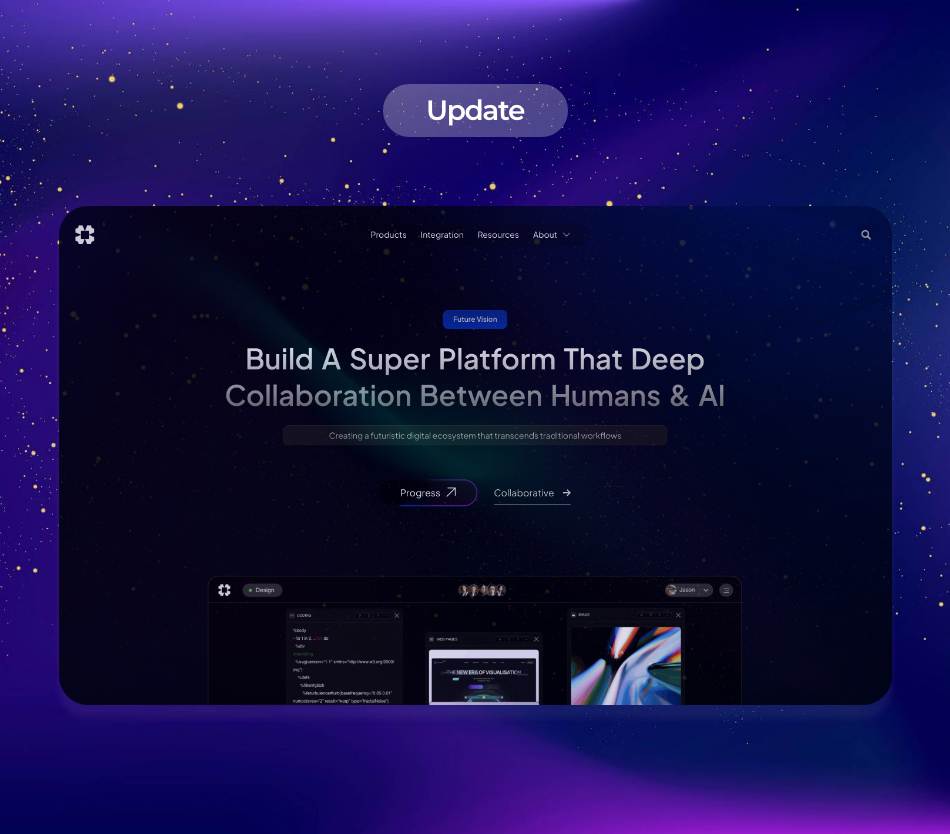Artificial Intelligence (AI) is no longer just a buzzword; it is reshaping various industries, especially in design. AI-assisted design tools are quickly becoming essential for artists, architects, and marketers, blurring the lines between human creativity and machine innovation. These tools employ machine learning algorithms to analyze vast amounts of data, allowing designers to create, iterate, and refine their work more efficiently than ever before. For instance, a prominent example is Adobe’s Sensei, which enhances creativity by automating routine tasks, offering intelligent editing suggestions, and even personalizing visual content for specific target audiences.
The design landscape is becoming increasingly complex as consumer preferences evolve. AI aids in addressing this complexity by providing insights that were previously unattainable. Designers can now rely on smart algorithms to predict trends, ensuring their work is visually appealing and relevant. In a world driven by user engagement, leveraging AI allows creatives to maintain a competitive edge.
As industries adapt to these revolutionary tools, it’s essential for professionals to embrace the change and learn to collaborate with AI. However, this raises important questions about the role of human creativity. While AI tools can suggest design alterations, the designer’s vision and understanding of user experience remain irreplaceable. The future will likely see more hybrid roles where AI augments human creativity rather than replaces it, paving the way for a new era in design.
**AI for Risk Management: Enhancing Decision-Making in Uncertain Times**
In an era defined by volatility, AI for risk management has emerged as a crucial aspect for organizations across industries. Rapid technological advancements and unpredictable global events necessitate sophisticated risk management strategies. AI offers unprecedented capabilities to analyze patterns, forecast potential risks, and generate actionable insights. Financial institutions, for instance, are increasingly utilizing AI models to enhance their risk assessment processes. By analyzing historical data and real-time information, these models can predict the likelihood of defaults, market downturns, or other financial threats more accurately than traditional methods.
Moreover, AI’s predictive analytics power enables organizations to make informed decisions before problems escalate. By identifying potential risks early, companies can implement preventative measures, thereby saving substantial amounts in potential losses. Various sectors like healthcare, logistics, and manufacturing are adopting these AI-driven solutions to enhance their strategic planning and operational resilience.
However, the implementation of AI in risk management is not without challenges. Dependence on algorithms can sometimes lead to blind spots if the AI models are not frequently updated with new data. Additionally, organizations must navigate the ethical implications of using AI, ensuring transparency while maintaining decision-making quality. As organizations continue to embrace AI for risk management, they will seek to balance these challenges with the opportunities AI represents in creating safer and more resilient business landscapes.
**AI-Based Data Management Solutions: The Future of Data**
The vast amounts of data generated every day can quickly overwhelm traditional data management systems. AI-based data management solutions are beginning to change the narrative. By automating data classification, enhancing data quality, and enabling advanced analytics, these solutions turn data into a strategic asset. Businesses in every sector are starting to recognize the potential of AI to streamline data management processes.
One of the key benefits of AI-based data management solutions is their ability to sift through unstructured data. For instance, natural language processing (NLP) enables businesses to extract meaningful insights from customer feedback, social media posts, and more. Companies can then utilize this valuable information to refine their products and tailor their marketing efforts effectively.
Moreover, AI plays a crucial role in data governance, ensuring compliance with regulations like GDPR while dynamically managing data storage and accessibility. As organizations shift towards cloud computing, the implications of data management are becoming increasingly complex. AI offers the analytical capabilities needed to make sense of this complexity, providing real-time insights and recommendations for better data stewardship.
Despite these advantages, organizations looking to implement AI-based data management should start with a clear strategy. Understanding the specific needs of the organization and selecting the right AI tools can significantly affect the successful integration of these solutions. As AI technology evolves, organizations must stay abreast of emerging trends and adjust their strategies to maximize the benefits.
**Industry Use Case: AI-Assisted Design Tools in Architecture**
The architecture industry is seeing notable advancements with the integration of AI-assisted design tools. Traditionally, architectural design is a lengthy process requiring extensive revisions based on client feedback and engineering challenges. AI tools assist architects by rapidly generating comprehensive design options, analyzing structural feasibility, and predicting project costs based on historical data. Companies like Autodesk are leading the charge with AI tools that facilitate real-time alterations, adapting designs to meet user specifications and optimizing material usage.
An excellent example is the use of generative design — a process where AI algorithms explore design options and present the best solutions based on given constraints. This enables architects to focus on key design elements rather than being encumbered by technical details. Additionally, AI can improve sustainability in architecture by analyzing the energy efficiency of buildings, optimizing designs for minimal environmental impact from the very start.
However, while AI tools greatly enhance productivity and creativity, they also demand a shift in skills for architects. Professionals need to become adept at using AI technologies while retaining their unique design philosophy. This fusion of technology and creativity will define future architectural endeavors.
In conclusion, the landscape across industries is rapidly evolving with the advent of AI-assisted tools. Whether through enhancing creative processes, refining risk management protocols or streamlining data management, AI is paving the way for new methodologies and improving operational efficiencies. As these technologies further integrate, the importance of human intuition and oversight will remain central to successfully harnessing AI’s capabilities. Organizations must embrace the future with an open mind, adapting and innovating to thrive in an increasingly automated world.
By staying informed about the latest trends and solutions, businesses can leverage AI effectively, ensuring they remain competitive in their respective fields. The continued collaboration between humans and AI will define the next era of industry innovation, setting the stage for groundbreaking advancements in design, risk management, and data handling solutions. The future is here, and AI is leading the charge.

























